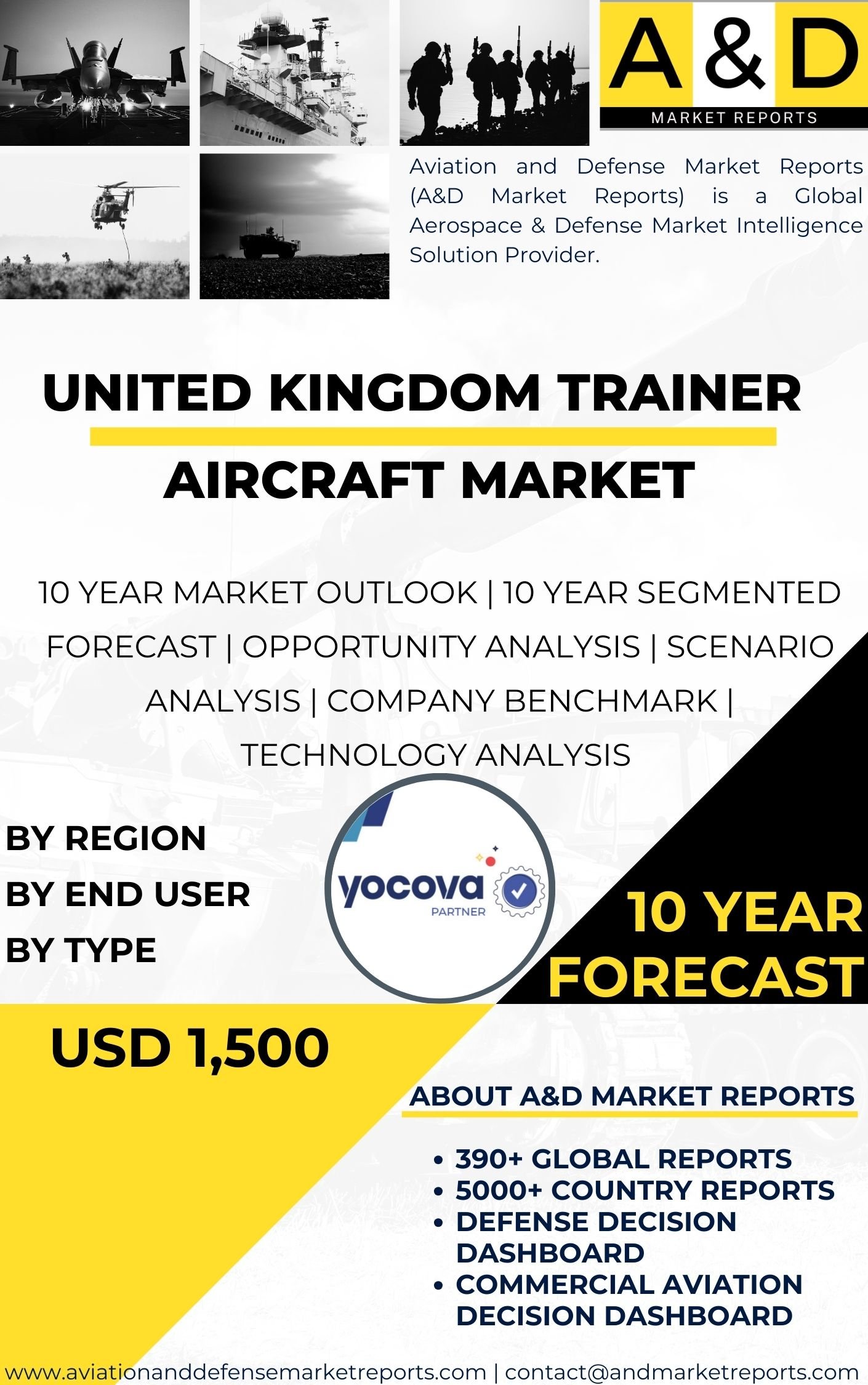Description
UK Trainer Aircraft Market: Strengthening the Backbone of Military Aviation
The United Kingdom Trainer Aircraft is a crucial pillar of the nation’s defense aviation ecosystem. These aircraft serve as the foundation for pilot development, equipping trainees with essential flying skills before they transition to advanced, mission-ready combat platforms. As modern warfare becomes more technologically complex, the demand for sophisticated, capable trainer aircraft continues to grow.
Strategic Role of Trainer Aircraft in the United Kingdom Trainer Aircraft
Trainer aircraft ensure a steady supply of well-prepared pilots for the British Armed Forces. They support every stage of the pilot training pipeline—from introductory flight lessons to advanced tactical preparation. By providing a structured and controlled learning environment, these aircraft minimize operational risk and help maintain high readiness levels across the forces.
Cutting-Edge Technologies Enhancing Training Capabilities
The latest generation of trainer aircraft in the UK incorporates advanced aviation technologies to mirror real-world operational conditions. Key advancements include:
-
Fully digital glass cockpits
-
High-fidelity avionics suites
-
Integrated simulation and mission rehearsal systems
-
Real-time performance analysis tools
These innovations allow trainees to experience complex flight scenarios, improve decision-making, and build proficiency that aligns with frontline aircraft operations.
Building a Skilled and Future-Ready Aviation Workforce
A robust training ecosystem underpins the UK’s air combat capabilities. Modern trainer aircraft, combined with expert instructors and sophisticated simulators, help pilots develop:
-
Strong technical flying skills
-
Situational awareness
-
Tactical judgment
-
Mission planning and execution capabilities
This skilled workforce ensures that the UK maintains air superiority and operational effectiveness in evolving threat environments.
Interoperability and Joint Forces Preparedness
UK trainer aircraft are engineered to work seamlessly with other military systems. This compatibility enhances:
-
Joint training exercises
-
Multinational mission planning
-
Combined-force operations with NATO allies
Such interoperability ensures UK pilots are prepared to operate within integrated, multi-domain battle environments.
Innovation Driving Market Evolution
Continuous technological innovation shapes the development of the UK trainer aircraft market. Manufacturers and defense partners are focused on improving:
-
Fuel efficiency
-
Flight performance
-
Safety systems
-
Lifecycle cost-effectiveness
These advancements help ensure training platforms remain relevant, resilient, and adaptable to future defense requirements.
Key Challenges in the UK Trainer Aircraft Market
1. Sustained Investment in Research and Development
Rapid technological changes demand consistent R&D funding to keep training fleets modern and effective.
2. Pilot Recruitment and Retention
The armed forces face growing pressure to attract and retain pilots. Modern trainer aircraft and streamlined career pathways help address this challenge.
3. Regulatory Compliance and Safety Requirements
Strict aviation standards ensure training safety. Meeting these requirements requires continuous fleet upgrades, maintenance excellence, and adherence to international guidelines.
Conclusion
The UK trainer aircraft market plays a pivotal role in shaping a highly skilled and mission-ready aviation force. By integrating advanced technologies, upholding stringent safety standards, and strengthening pilot development programs, the sector fortifies the UK’s defense posture. Ongoing innovation, investment, and strategic planning will ensure that Britain retains world-class military pilot training capabilities well into the future.




